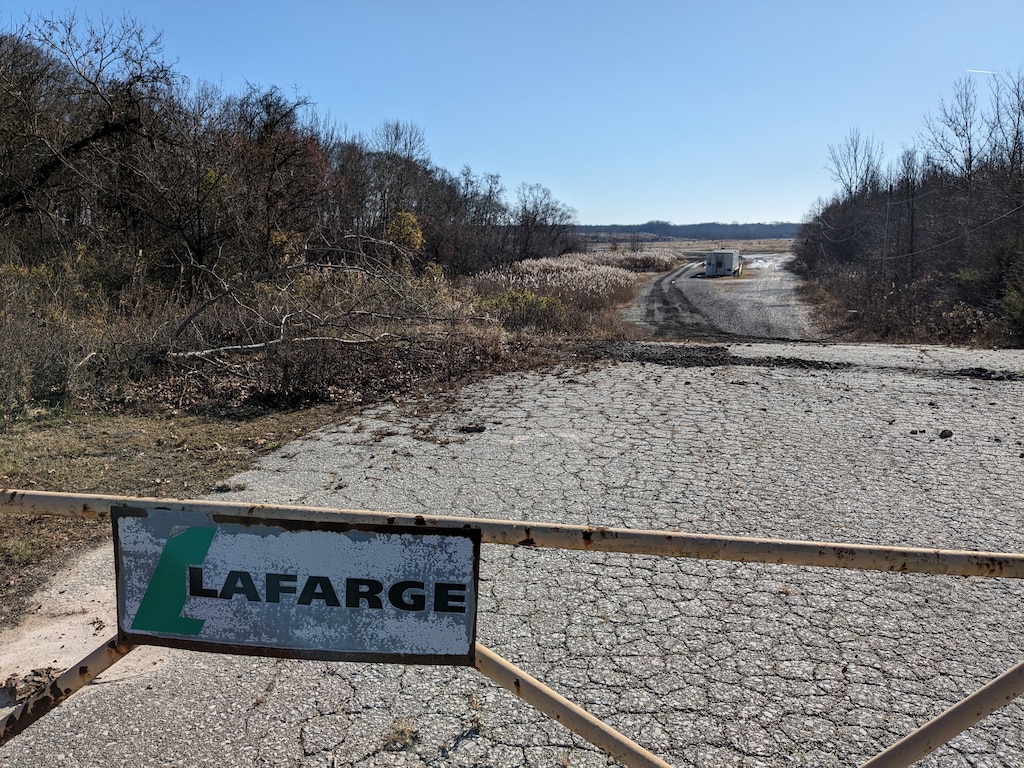They’re huge. They’re ugly. Big trucks go in and out of them at all hours of the day.
They’re also among the biggest employers in some Maryland counties. Their property taxes fund schools and local governments. And they’re the reason why you can push a button and have a TV, diapers or almost any other product delivered to your doorstep within a day.
Warehouses are the backbone of Baltimore’s logistics industry, but after years of explosive growth, some residents are fed up with traffic congestion and the loss of green space. The crickets still chirp and the birds still sing, but now the tractor trailers rumble and the air brakes hiss. The region has a healthy supply of warehouses for now, but is on pace to have a severe shortage within a few years, real estate analysts say.
So Maryland is left with a dilemma: Where do we put all these warehouses?
The Baltimore Banner thanks its sponsors. Become one.
“They’re not making any more land that’s right on I-95 or right between Baltimore and D.C.,” said Jonathan Carpenter, a Baltimore-based executive managing director for the commercial real estate firm Cushman & Wakefield.
Square-footage by the millions
Few areas are poised to reap the benefits — and suffer the growing pains — of the country’s modern logistics industry like Baltimore, according to Carpenter. The region boasts a deep-water port, rail lines and an interstate highway system that allows truck drivers to reach 100 million Americans within a single day. It also has one of the most affluent consumer bases in the country.
One of the hotter markets for warehouse space right now is Eastern Baltimore County, which is positioned near I-95 and the Port of Baltimore. Bob Bendler had no idea the area would be a magnet for warehouse development when he moved there two decades ago.
Bendler, a retired county employee, built a home on the Middle River, not far from the former Lafarge Quarry. The quarry is currently being filled in with dirt, and Bendler thought it should be a park one day. Then he heard about plans to build a 2.8-million-square-foot warehouse complex there.

Bendler said he believes truck traffic would overwhelm local roads. As the leader of his community association, Bendler organized with other residents to stop the development. This year, the Baltimore County Council passed a law rescinding approval of the proposed warehouse, an unprecedented step that drew the attention of developers.
The Baltimore Banner thanks its sponsors. Become one.
Communities once welcomed these warehouse developments, according to Bill Pellington, executive vice president at the commercial real estate firm CBRE, but a lot has changed in recent decades.
Warehouses used to be smaller — about 300,000 square feet max — and parcels ripe for development dotted the land near highways. Today, regional distribution centers can be 1 million square feet or bigger, Pellington said, and they’ve been gobbling up green space in exurban areas, particularly along I-95 northeast of Baltimore.
According to an analysis by Cushman & Wakefield, the Baltimore region has 14 warehouses of at least 1 million square feet. Nine were built in the last decade.
The region now has about 190 million square feet of warehouse space, Pellington said. He defines Baltimore’s warehouse market as the I-95 corridor from the Washington, D.C., beltway to the Delaware state line. There was a boom in new construction in recent years, both regionally and across the country, and demand hit a fever pitch during the pandemic.
The market has since cooled, but reports from commercial estate firms show occupancy rates in the Baltimore region remain higher than pre-pandemic levels. Rents continue to climb at an unprecedented clip.
The Baltimore Banner thanks its sponsors. Become one.
Kate Jordan, a commercial real estate broker and the principal of Columbia-based Lee & Associates, said she’s had to break the news to tenants that the price of warehouse space is now 50% higher than it was a few years ago.
“We have never seen growth like this before,” Jordan said. “I don’t see it slowing down.”
Rates are growing especially fast near the privately and publicly owned marine terminals collectively known as the Port of Baltimore, and the government is betting big on the port’s continued growth. Maryland, Pennsylvania and federal agencies, plus the rail company CSX, cobbled together $466 million to make the 1.7-mile Howard Street Tunnel running under Baltimore tall enough for trains to double-stack containers.
When the tunnel is rebuilt in 2027, the Port of Baltimore will be able to handle 160,000 more containers each year, according to Richard Scher, spokesman for the Port of Baltimore, and the goods in those containers will need to go somewhere.
“Continuing to grow a good warehousing and distribution center network will be critical to our future container business needs,” Scher said in a statement.
The Baltimore Banner thanks its sponsors. Become one.
Bendler wants all that warehouse development to take place at Tradepoint Atlantic, a massive logistics and industrial campus at Sparrows Point.
“Tradepoint Atlantic is the best thing to happen to Eastern Baltimore County in decades,” Bendler said. “That’s the place where warehouses and distribution can serve not only Eastern Baltimore County, but hell, the whole state.”
As the company’s executive vice president of corporate affairs, Aaron Tomarchio appreciates the flattery, but he said Tradepoint Atlantic — all 3,300 acres of it — cannot handle the warehouse needs of Maryland.
“I’d like to say we could, but the supply chain in this country is complex,” Tomarchio said, explaining that it takes all sorts of distribution centers to create fast, reliable and cheap deliveries. “It’s not magic.”
‘I don’t need your warehouses’
Today, the biggest private employer in Baltimore County is Amazon, which has multiple fulfillment centers at Tradepoint Atlantic.
The Baltimore Banner thanks its sponsors. Become one.
Amazon has about 9,000 employees in Baltimore County, plus another 4,500 in Baltimore City and 1,400 in Harford County, according to annual fiscal reports. Four of the top 10 employers in Harford County are distribution or logistics centers.
In 2021, a proposal to build a 5.2-million-square-foot warehouse complex on Perryman Peninsula in Harford County roiled the community, according to the Baltimore Business Journal. Residents sued the county to stop the developer, which in turn also sued the county. Residents later dropped their suit, and the developer’s suit is dormant.
The developer, Hanover-based Chesapeake Real Estate Group, is the same firm that wanted to build a warehouse complex on Lafarge Quarry.
Matt Laraway, the developer’s head of leasing, agrees that building a warehouse on a farm field will change a community. So Laraway said his firm listened to feedback and tried to make the plan palatable for everyone.
The firm proposed building roundabouts, wider roads, dedicated turn lanes and an overpass on Perryman Peninsula, steps that Laraway said would actually decrease the amount of traffic congestion in the area — but no one seemed to believe him.
The Baltimore Banner thanks its sponsors. Become one.
“They’re trying to fight the big bad developer in the court of public opinion rather than reliable technical data,” Laraway said. “They just didn’t want it.”
This year, the Harford County Council passed a six-month moratorium on building warehouses.
“We’ve got to look beyond the warehouse stuff,” said County Executive Bob Cassilly, a Republican elected in 2022. “The truck traffic is astounding.”
Cassilly said Harford County can attract manufacturing and high-tech industries with higher-paying jobs.
“I’m building a workforce that has nothing to do with these buildings,” Cassilly said. “I don’t need your warehouses. I’m not some empty county in the Midwest that’s like, ‘Please give me something.’”
‘Nobody wants it in their backyard’
Chesapeake Real Estate Group is having a warmer reception in Anne Arundel County, where the firm is vying to redevelop the Belle Grove landfill. County Executive Steuart Pittman said the developer has done a good job engaging the community about a proposal that could include housing, a park and, of course, warehouse space.
No project has been approved, Pittman said. Regardless of what happens at the landfill, Pittman expects warehouse demand to grow in Anne Arundel County, especially near BWI International Airport. Managing that growth and figuring out the best use for land will be tricky, he said.
“I often say, most wars have been over land,” Pittman said. “And in local government, most conflict is over land.”
Jim Lighthizer, the president of Chesapeake Real Estate Group, believes social media is fueling some of the pushback against warehouse development. Rather than finding common ground, some politicians are throwing their hands up and giving in to the wishes of a select few, Lighthizer said.
“Everybody wants it, but nobody wants it in their backyard,” he said.
Lighthizer thinks this pushback is cyclical. Communities are snubbing warehouse development in part because of a historically low unemployment rate, Lighthizer said, but eventually the economy will have a downturn — and then people will remember the jobs and tax revenue created by those big, boxy buildings.
“We build homes for businesses,” Lighthizer said. “That’s what we do.”





Comments
Welcome to The Banner's subscriber-only commenting community. Please review our community guidelines.